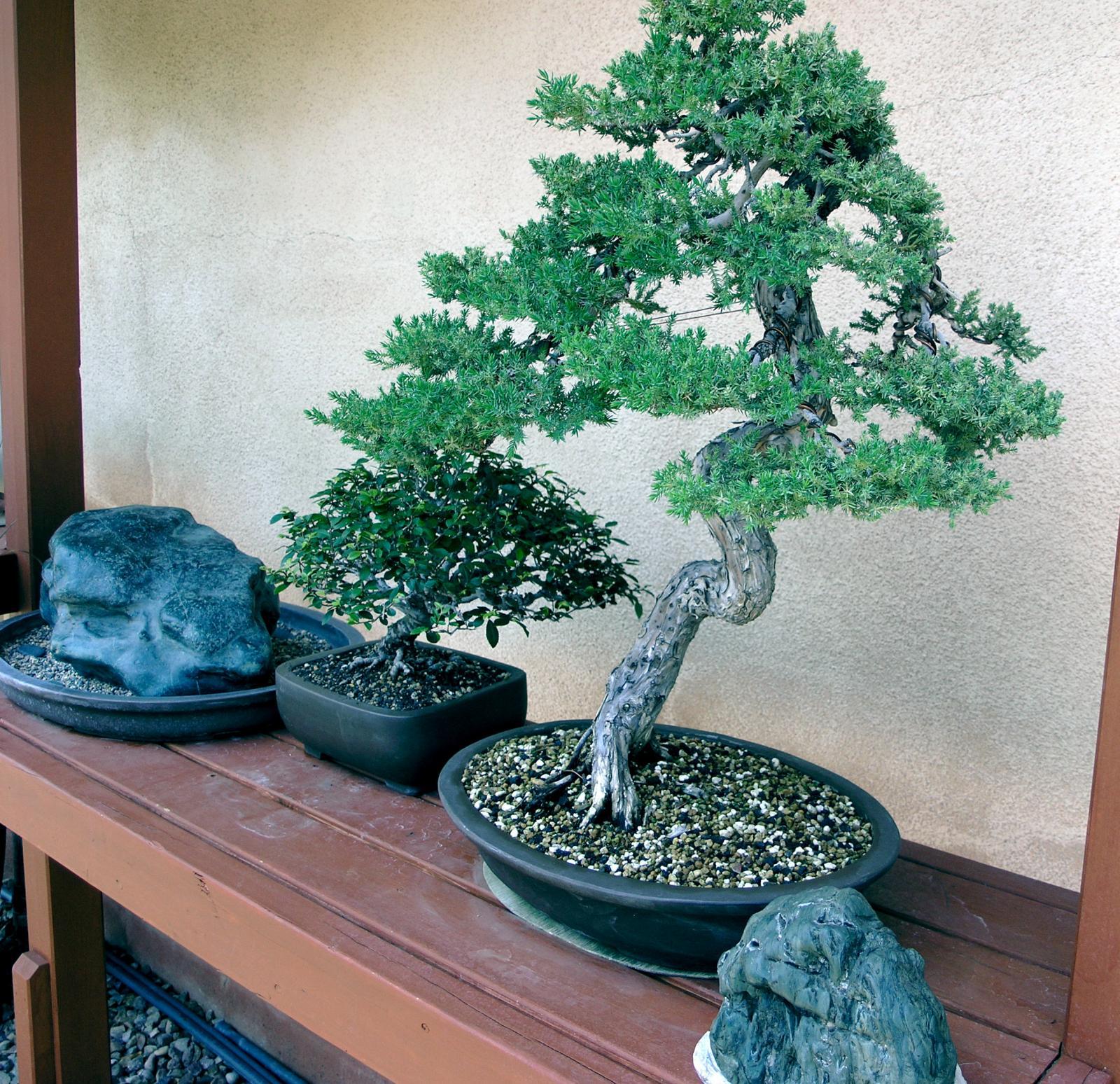
Bonsai is a dwarfed tree growing in a small tray or pot. Bonsai is considered an art, just like flower arranging and painting. The size of a bonsai plant can range anywhere from six inches to approximately 36 inches in height or taller.
| There are several species of plants, which are suitable for bonsai: | |
| Azalea Cotoneaster dammeri Cotoneaster microphylla Dwarf Alberta spruce Dwarf hemlock Eugenia Fig species Firethorn Ginkgo biloba Hinoki false cypress Japanese garden juniper Japanese holly |
Japanese maple Japanese wisteria Murraya Myrtle Natal plum Osmanthus Pomegranate San Jose juniper Sargent's juniper Serrisa Sweet Ooive Zelkova serrata |
Light conditions
Most bonsai plants require direct sunlight to perform best, but light intensity requirements depend on plant variety. South or west windows are good in the winter but may be too hot in the summer. Fluorescent lights may be used to give bonsai enough light in winter. Special plant tubes, eight to 10 inches above the plants and left on for 12 to 18 hours per day, will help increase the light intensity nicely.
Temperature
Most plants perform best outside during the summer, but be sure to acclimatize indoor plants to outdoor light first. Hardy bonsai (junipers, boxwood, and other evergreens) should be buried outside, up to their first branch and left to freeze over the winter. The semi-hardy types require an annual dormant period of 60 to 90 days at 30 to 50°F, normally in the fall. These can withstand a light frost but must be protected from heavy frost. Semi-hardy bonsai can spend their dormancy in a cold frame, garage or in a corner of the refrigerator. Indoor types (sub-tropicals) are more ideally suited to daytime temperatures of 70 to 75°F and nighttime temperatures of 60 to 65°F. Do not let indoor types freeze.
Watering
Soil should be kept moist but not wet. The frequency of watering will depend on the size of the pot. To water, first mist the surface of the soil well. Then, slowly pour water over the surface of the trunk area, allowing the water to soak in. The plant is completely watered when water comes through the drainage holes. This is important because the roots usually fill the container and all areas must be moistened.
Alternative method of watering: set the pot in a pan or tub. Fill the tub, allowing the water to reach three-quarters of the way up the side of the pot. Moisture will seep in from the outdoor edge of the pot towards the trunk. When the area near the trunk is moist, remove the plant and let it drain. DO NOT LET SOIL DRY OUT.
Humidity
Maintain higher humidity levels for indoor bonsai plants by setting pots on pebbles in trays in which water is kept almost to the bottom of the pot. Moss on top of the soil helps to preserve moisture. Moss is decorative and difficult to keep looking green, even in a greenhouse. Growth is cyclical and the colour changes from green to brown, to yellow to black, and then to green again. A fine spray twice daily will keep the moss in good condition.
Repotting
To keep plants healthy, broadleaf plants should be repotted every one to three years, depending on their size. Conifer or needle leaf evergreens should be repotted every four to five years (see if roots appear at the drainage holes). The best time to repot is early spring. Carefully remove the soil ball and plant from the pot. With a fork, loosen and remove half- to one-inch of the soil from the outside perimeter, working in from the edges. Trim off any roots, which were exposed by removing the soil, being careful not to sever any major roots. Seek professional advice if you are not sure of how to prune. Reposition the plant in the same or different pot. Fill carefully with fresh bonsai soil and press soil firmly around the plant. Water thoroughly and keep the plant in the shade for one week while new roots from. Fertilize approximately one month after repotting.
Fertilizing
Miniaturizing is accomplished by pruning and pinching, not by starving. Alternate applications of organic and chemical fertilizers are recommended for bonsai. Bonsai roots are very sensitive, which means you are better to over-dilute fertilizer rather than under-dilute. Frequency depends on the plant variety - but the plant must not be dry when fertilizing. Be sure the fertilizer you use contains trace elements, including copper, iron, zinc, and other minerals, or the plant will show some yellowing.